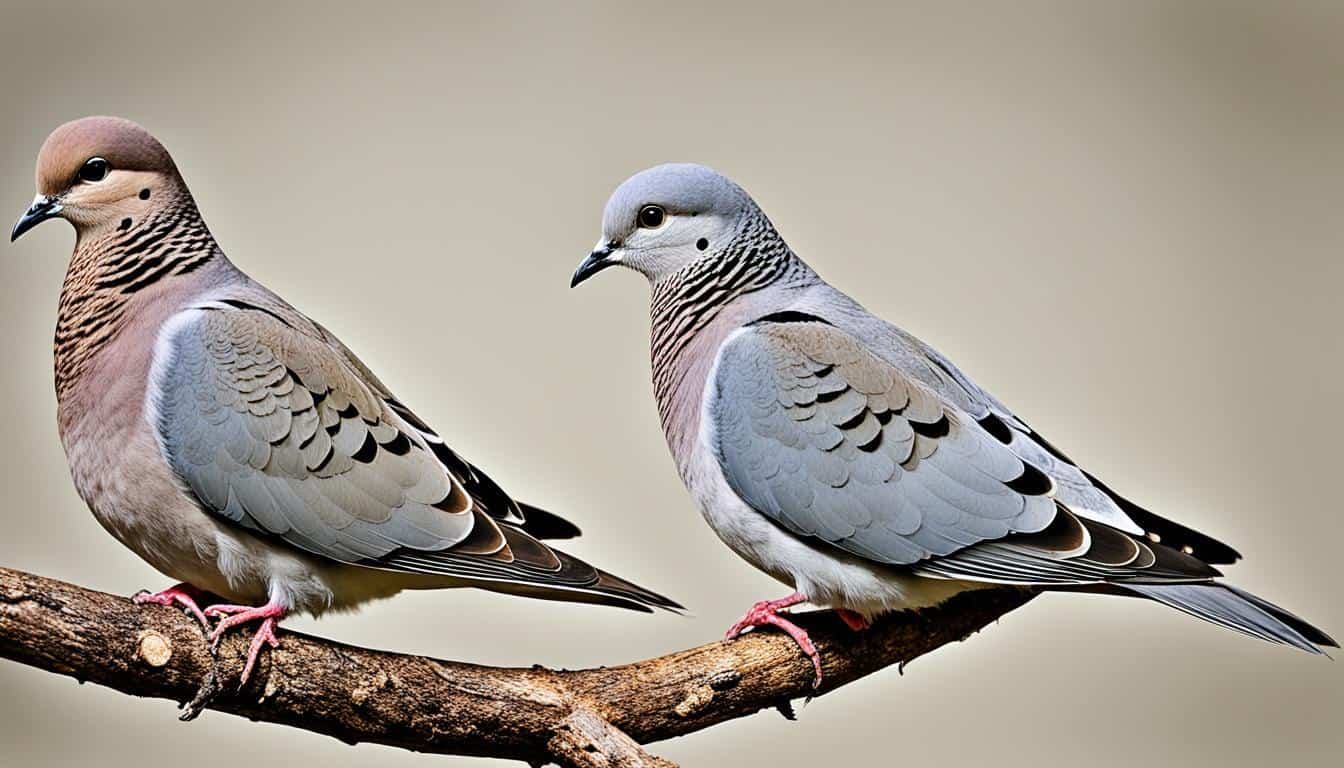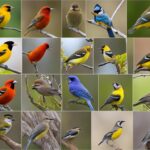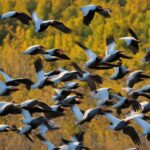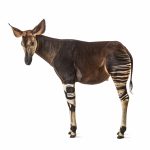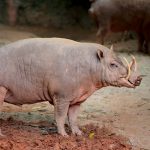Ever wondered what makes one dove different from another as you watch them in your backyard? Understanding dove species identification is fun and essential for nature lovers and those working in conservation.
The U.S. is home to various North American dove species. Each one is unique, with its own colors, calls, and habits. Knowing them helps us feel close to nature.
This USA dove species guide will show you how to tell them apart. It will also explore where they live and the joy they offer to birdwatchers.
Introduction to Dove Species in the United States
The United States is a hub for many dove species. Each one is special, catching the eye of anyone interested in birds. Knowing about the different dove types is key to telling them apart and admiring their calm ways.
Different dove species in the U.S. include the Mourning Dove, Eurasian Collared-Dove, and White-winged Dove. They all have unique features. This makes identifying them fun for those who love birdwatching. Their peaceful actions and sweet songs make the birdwatching experience wonderful.
Doves and pigeons belong to the same Columbidae family. This can lead to some thinking they’re the same. Yet, they are quite different in their actions, size, and looks. Studies show they are smart too, able to handle tough environments and remember people.
Whether you’re just starting to explore birdwatching or already an expert, learning about dove species is rewarding. Knowing how to spot particular doves can add joy to your birdwatching trips. Here, we’ll compare some common doves found in the U.S. to help you begin.
| Dove Species | Distinctive Traits | Common Habitats |
|---|---|---|
| Mourning Dove | Soft gray color, long pointed tail with white edges, black wing spots | Woodlands, urban areas, farmlands |
| Eurasian Collared-Dove | Pale gray plumage, black crescent collar around neck | Urban gardens, farms, suburban areas |
| White-winged Dove | White wing patches visible in flight, blue eye-ring | Deserts, scrublands, urban areas |
Learning about dove species in the United States helps you understand their lives. It also inspires efforts to protect them. By knowing about these doves, you help keep their homes safe and support life diversity.
Identifying Characteristics of the Mourning Dove
The Mourning Dove is a familiar sight in North America, loved by birdwatchers for its unique looks and calm nature. Knowing about these birds can make your birdwatching more interesting. It also helps you learn about different types of doves.
Coloration and Markings
Mourning Doves stand out with their gray feathers. They have black spots on their wings. You see these spots clearly when they fly. Their tails are long and have white tips, making them easy to spot.
Habitat and Range
Mourning Doves live in many places. They can be found in woods, fields, farms, and even cities. Their wide range of homes shows how adaptable they are. This makes them a key part of any good dove species guide.
Behavior and Calls
Watching Mourning Doves is a joy. They search for food on the ground. Their fast, straight flights are marked by quick wingbeats. And their soft, peaceful cooing sound is their signature call. Use these tips to get better at spotting and enjoying these peaceful birds.
Distinguishing the Eurasian Collared-Dove
The Eurasian Collared-Dove is a bird that catches the eye. It’s known for looking a certain way and liking specific places to live. Learning about this bird can make birdwatching more exciting in the USA.
Physical Features
Identifying the Eurasian Collared-Dove is easy because of its looks. It is mostly pale gray with a black “collar” at its neck. This “collar” is a big clue when you’re trying to figure out what bird you’re seeing.
The dove also has white tips on its tail feathers. These show up clearly when it flies. Even though they are slim, these doves seem strong, especially because of their pink legs.
Habitat Preferences
Knowing where the Eurasian Collared-Dove likes to live is useful for bird enthusiasts in the USA. They have done well in various settings since arriving in North America. You can spot them in places like city gardens, suburban areas, and farmlands.
They enjoy places touched by humans, which makes them easy to see in many parts of the country. Look for them on power lines or searching for food in fields.
Below is a comparison of key points for identifying and finding this bird:
| Identification Marker | Eurasian Collared-Dove |
|---|---|
| Primary Color | Pale Gray |
| Distinct Feature | Black Collar |
| Habitat Type | Urban, Suburban, Farmlands |
| Common Perching Spots | Power Lines, Open Fields |
Features of the Band-tailed Pigeon
The Band-tailed Pigeon is known for its unique look. It has gray and maroon feathers. This makes it easy to spot, especially with its white neck patch.
These pigeons love to hang out in groups in wooded areas. Seeing them fly is a treat for anyone who loves to watch birds in American birdwatching.
But, sadly, their numbers are dropping. This is mostly due to losing their homes and being hunted. It’s crucial to protect them so they don’t disappear.
For those keen on identifying doves, knowing about their home and looks is key. Here’s a guide to tell the Band-tailed Pigeon apart from other doves:
| Feature | Band-tailed Pigeon |
|---|---|
| Plumage | Gray with maroon highlights |
| Neck Patch | Distinctive white |
| Habitat | Coniferous and oak woodlands |
| Behavior | Flocking |
| Conservation Status | Decreasing population |
Recognizing the Common Ground Dove
The Common Ground Dove is a standout in birdwatching, especially in backyards. Its small size and distinct patterns catch the eye of those watching. This makes it easy to pick out from other doves.
Size and Shape
This dove is very small, about the size of a sparrow. Its round body and short tail are unique. Plus, a scaly pattern on its feathers adds to its beauty. These features help you spot it in your yard.
Feeding Habits
To know the Common Ground Dove, just watch how it eats. It feeds on the ground, looking for small seeds. You’ll often see it in areas with few trees, sniffing out its food. Watching this can help you know what you’re seeing.
Now, let’s sum up what we know about the Common Ground Dove:
| Feature | Details |
|---|---|
| Size | Sparrow-sized, with a rounded body |
| Shape | Short-tailed with a scaly plumage |
| Foraging Habits | Ground foragers, prefer semi-open habitats |
Differences Between African Collared-Dove and Eurasian Collared-Dove
African and Eurasian Collared-Doves look similar but they have key visual differences. Looking closely, you can pick out their unique traits. This makes telling them apart easier.
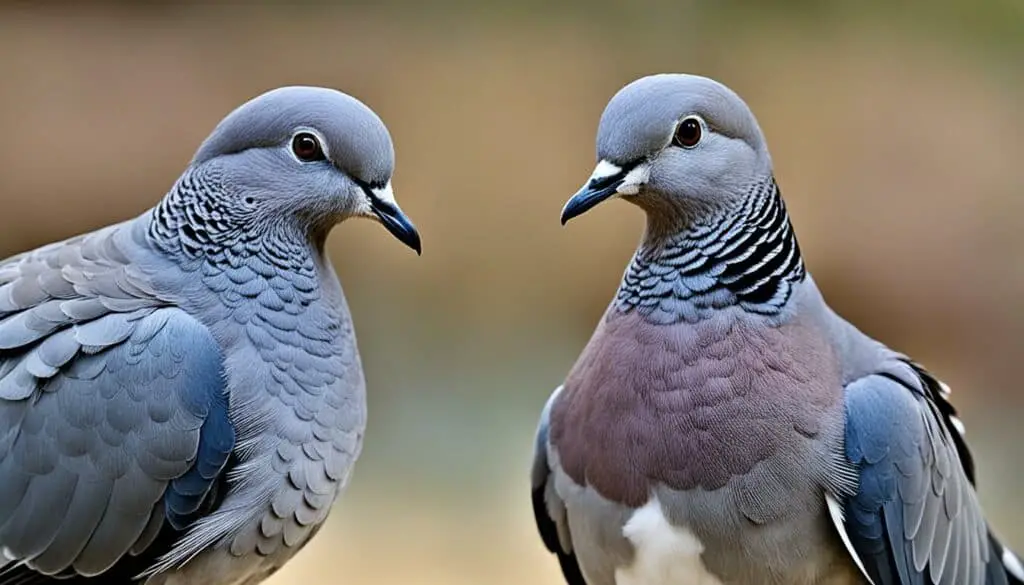
Visual Differences
The African Collared-Dove has a light, sandy color with a black neck ring. On the other hand, the Eurasian Collared-Dove is more gray and has a clear black collar. Noting these color and pattern differences is important for identifying each type of dove.
Geographic Distribution
The doves also live in different places in the United States. You can often see the African Collared-Dove in Florida. However, the Eurasian Collared-Dove has made its home in several states, such as California.
Both doves are comfortable in cities, but their living areas are not the same.
| Characteristic | African Collared-Dove | Eurasian Collared-Dove |
|---|---|---|
| Primary Color | Sandy | Gray |
| Neck Ring | Distinct Black | Prominent Black |
| Common Locations | Florida | California, various states |
How to Identify the Inca Dove
The Inca Dove stands out with unique features making it unforgettable. Among the most noticeable is its feather pattern. Each feather looks like it has little scales, making it distinctive. This makes it easier for birdwatchers to spot.
Another thing that makes the Inca Dove easy to recognize is its size. It’s smaller than most other kinds of doves. You can tell it apart by its tiny body and long, slim tail. You might catch it flying gracefully or exploring your garden with its tail laid out.
In cooler weather, the Inca Dove does something special to stay warm. They form a pyramid shape when they roost. This is an amazing thing to see and it’s also a great dove identification tip for cold days.
Now, let’s look at how the Inca Dove is different from other backyard doves:
| Feature | Inca Dove | Other Backyard Doves |
|---|---|---|
| Feather Pattern | “Scaled” texture | Smooth, uniform feathers |
| Size | Small | Varies, generally larger |
| Tail | Long, slender | Short to medium |
| Cold Weather Behavior | Pyramid roosting | None specific |
Looking at Inca Dove featureslike its feather texture, size, and roosting habits helps you tell it apart. These dove identification tips will boost your birdwatching joy. You’ll be able to spot the Inca Dove easily among other doves in your yard.
Traits of the White-winged Dove
The White-winged Dove stands out with its unique looks and behaviors. It has well-defined marks and interesting ways of living. This makes it an intriguing bird for many people.
Markings
Start by looking at the White-winged Dove’s markings. It has a white line along its wings and a white end of its tail. These features make it easily identifiable. When it flies, the white wing stripe is really clear.
Migratory Patterns
This dove is a migratory bird, moving with the seasons. It heads to areas with food, like the trees of the Saguaro cactus. This pattern of moving, or migration, happens every year.
The dove’s flight pattern can change based on the weather or other outside forces. This shows how it adapts and responds to its environment.
Vocalizations
The White-winged Dove’s sounds are special and different across places and times of the year. When they coo, it’s quite musical. They make these sounds for talking and marking their territories.
If you’re into birds, recognizing them by their calls is a joy. It’s also a big part of their role in nature.
Spotting the Rock Pigeon in Urban Areas
The Rock Pigeon is the classic city bird, captivating for those into urban bird watching. They come in various colors like blue-gray and iridescent green and purple on their necks. You can often see them on city streets, in parks, and on buildings.
These pigeons do well in cities because they eat almost anything. This includes seeds, fruits, and scraps we leave behind. Their success with us shows how different birds adapt to city life.
Rock Pigeons are easy to spot because of their shape and flying skills. They have stout bodies, short legs, and wings that help them fly fast. They’re a common sight and a great example of how wildlife and people coexist.
If you love birdwatching or just exploring the city, finding a Rock Pigeon can be really fun. They show us how nature fits in with our urban lives. For those learning about birds in the city, the Rock Pigeon is a key part of that story.
Special Characteristics of the White-crowned Pigeon
The White-crowned Pigeon is quite unique among tropical dove species. It catches the eye with its clear features. Many birdwatchers are drawn to this bird because of its odd looks and where it likes to live.
Appearance
This bird is known by its white cap atop a dark, slate-gray body. This makes it very easy to spot. Its body is strong, and it has long wings and a wide tail for flying well. Plus, its eyes are a bright, red color, making it even more interesting.
The white cap
on its head is why it’s called the White-crowned Pigeon. This feature is both beautiful and key for recognizing the bird.
Preferred Habitats
The White-crowned Pigeon loves areas like coastal and mangrove forests. It’s also seen in subtropical woodlands. It’s not very common in the USA. You mostly find it in the far south of Florida. Places like the Florida Keys and occasionally the Everglades are where birdwatchers can see them.
| Characteristic | Description |
|---|---|
| Appearance | Slate-gray body, white crown, red eyes |
| Habitat | Coastal and mangrove forests, subtropical woodlands |
| USA Presence | Southern Florida, Florida Keys |
Conclusion on How do you identify different species of doves in the USA?
Finding and naming dove species in the USA is fun for bird watchers. But it also helps keep these birds safe. Learning about each dove, from the gentle colors of Mourning Doves to the patterns on Inca Doves, helps us protect them.
Dove spotting is not just for fun. It gives important info to groups that protect birds. Organizations like the American Bird Conservancy work hard to save bird homes. Your notes can help them make better plans to keep dove species alive.
Seeking out doves in the US, like Rock Pigeons in cities and White-crowned Pigeons in the tropics, makes bird watching lively. Use this guide to enjoy watching and helping doves live in their natural spaces.
FAQ
How can you identify different species of doves in the USA?
Identifying dove species in the USA means looking at their colors, size, and sounds. Also, where they live and what they do can give clues.
What are the common characteristics of dove species in the United States?
In the USA, doves are usually gray or brown with soft feathers. They have slender bodies, pointy tails, and often sing soothing songs.
How do you identify the Mourning Dove?
To find a Mourning Dove, look for its gray feathers and white-tipped tail. They have black wing spots and cooing sounds. They like woodlands and cities.
What distinguishes the Eurasian Collared-Dove from other doves?
The Eurasian Collared-Dove stands out with pale gray feathers and a black neck ring. It likes urban areas and farms. It has done well in North America.
What are the identifying features of the Band-tailed Pigeon?
The Band-tailed Pigeon is different, with gray and maroon feathers and a white neck patch. It lives in woodlands and faces population threats.
How can you recognize the Common Ground Dove?
The Common Ground Dove is small like a sparrow, with scaled feathers. It finds food on the ground in open places.
What are the differences between the African Collared-Dove and the Eurasian Collared-Dove?
The African and Eurasian Collared-Doves differ slightly in their looks and range. African Collared Doves are seen more in Florida and California.
How do you identify the Inca Dove?
Search for the small Inca Dove with its unique feather pattern and long tail. They roost in pyramids to stay warm.
What are the key traits of the White-winged Dove?
The White-winged Dove is marked by its white wings and tail. They follow the Saguaro cactus fruit and make different sounds. Some migrate while others don’t.
How can you spot the Rock Pigeon in urban areas?
Rock Pigeons live close to people in cities and have many colors. They are known for adapting well to urban living.
What are the special characteristics of the White-crowned Pigeon?
The White-crowned Pigeon looks special with a snowy white cap. It prefers tropical areas and is mainly in southern Florida in the USA. Watching them fly is exciting.

